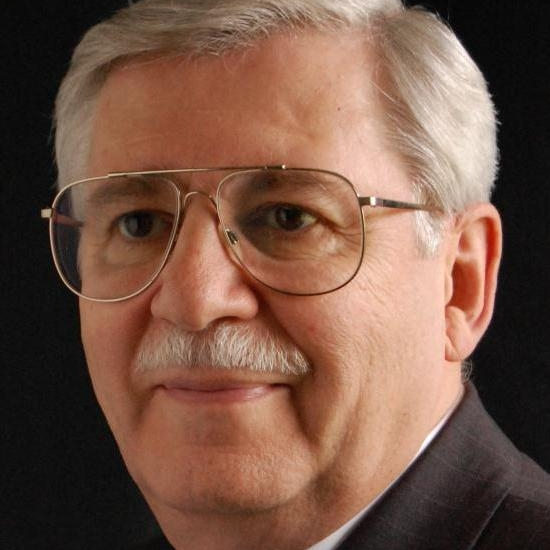How pharmacists can play a role in curtailing the rising cost of drug therapy





Medications consumed almost 10% of U.S. national health expenditures in 2017, while pharmaceutical spending is estimated to top $370 billion by the end of 2019.[1]
For every dollar in medication cost, there is an additional dollar cost in treatment failure. However, the $370 billion mentioned above does not include the cost for treatment failures and medication-related injury that result from poor drug selection, poor medication adherence and overutilization. Those medication-related issues cost an additional $528.4 billion yearly, according to an article in the September 2018 issue of Annals of Pharmacotherapy.[2]
There is ample evidence that much of the cost associated with failed treatments can be avoided by prudently using clinical pharmacists practicing at the top of their license in collaboration with prescribers. According to a report to the U.S. Surgeon General that evaluated the cost‐efficiencies of pharmacist‐delivered patient care, effective patient care services related to medication management can yield a return on investment of as high as 12:1 (and averaging 4:1) from reduced hospital admissions, unnecessary or inappropriate medication use and reduced emergency department admissions and overall physician visits.[3]
Contributions to treatment failure and its high cost
There are five main causes of medication-related treatment failures leading to these unwanted costs:
- Patients not taking their prescribed medicationPrescribers not following evidence-based treatment guidelines
- Preventable medication-related injuries
- Overprescribing (polypharmacy)
- Gaps in handling of medication during transitions of care
- Notable evidence points to potential benefits from engaging clinical pharmacists to address these problems.
Improving patient adherence to prescribed medications. The authors of the previously cited Annals of Pharmacotherapy article estimated the annual cost from poor patient adherence to prescribed medications could be as high as $289 billion. Moreover, about 25% of new prescriptions are never picked up at the pharmacy, and 50% of medication is not taken as prescribed. Among patients prescribed medications for chronic diseases, after six months, the majority take less medication than prescribed or stop the medication altogether.[4] Studies have shown that a 20% increase in adherence decreases healthcare use by 4% and the effective use of pharmacists can improve medication adherence by as much as 30%, reduce 30-day hospital readmissions by 24% and reduce ED visits by 30%.[5]
Ensuring medication is prescribed according to national, evidence-based guidelines. The authors of the Annals of Pharmacology article found that addressing this issue could save $97 billion annually in the ambulatory care area alone. Meanwhile, another study found that pharmacists have the potential to improve compliance with evidence-based treatment guidelines by 35% to 45%.[6]
Preventing medication-related drug injury or mortality. The cost to the nation from such medication-related outcomes, according to the Annals of Pharmacology study, is $177.4 billion annually, and in 2001, the cost per a drug-related injury was estimated at $2,233, which amounts to $2,819 per case in 2019 dollars.[7] Yet another study found that pharmacists using structured interventions can streamline therapy and reduce preventable adverse drug events by 6.8%.[8]
Avoiding over-prescribing and drug therapy that is not streamlined. Roughly 10% of adults (30% in those 65 years old or older) in the U.S. are prescribed inappropriate medication therapy resulting in an added cost of $36 billion per year.[9] Pharmacists using structured criteria can reduce overprescribing by 14.6%, according to one study.[10]
Removing gaps during care transitions. The cost for unnecessary 30-day hospital readmissions is $26 billion a year for Medicare alone, of which $17 million a year is preventable.[11] Moreover, many medication-related problems arise when patients transition from one level of care to another. A 2018 study found that pharmacists, using a transitions-of-care model, saved $2,139 in total healthcare costs over six months, on average, for every patient referred to them as a high risk for readmission.[12]
Other studies have shown suboptimal clinical outcomes also can result from a lack of effective preventive medication therapy (see the sidebar “The benefits of preventive medication therapy”).
Hospitals also can experience a negative financial impact from missing incentive payments because of falling short of meeting medication quality measures, and pharmacists could play a role in helping avoid such an impact.
Pharmacists as healthcare practitioners
The effective use of pharmacists in managing avoidable medication costs begins with physicians acknowledging the pharmacists as full-fledged healthcare practitioners and not simply a support service.
Pharmacy has evolved considerably from how it was perceived in the early to mid-20th century, when the focus for pharmacists was on keeping patients safe by ensuring patients received what physicians prescribed. However, starting in the early 1960s, many pharmacists recognized what was prescribed was not always based on what was best, or on clinical evidence; and clinical pharmacy began to emerge as a discipline.[13] Then, by the 1990s, pharmaceutical care began to take hold in hospitals, shifting pharmacists’ primary focus from dispensing drugs to patients as prescribed by physicians to optimizing drug therapy for patients.
3 recommended changes
To fully leverage pharmacists’ expertise for cost-effective drug therapy, three changes are needed.
A paradigm shift how clinical pharmacists are placed. Since the advent of pharmaceutical care, most physicians now embrace clinically focused pharmacists in the hospital setting as valued-added collaborators who help them in the care of patients. Meanwhile, because of the paradigm shift from pay-for-service toward pay-for-performance, many previously hospital-based services are now delivered in ambulatory settings. Thus, the greatest healthcare need for effective pharmaceutical care today is in the ambulatory environment.
The Veteran’s Administration and Kaiser Permanente have been leaders in this area, having used pharmacists in clinics for more than 25 years. But other health systems and private clinics have been slow to follow their example. Senior executives of hospitals and large multispecialty clinics should acknowledge the data pointing to the benefits of pharmaceutical care and the potential strategic advantage of placing pharmacists in their ambulatory clinics and home care services to help manage patients at high risk for hospital readmissions.[14]
Add a quality measure. Besides the many HEDIS and Medicare STAR quality measures that involve medication therapy, one additional measure is needed, with a focus on improving medication adherence in patients deemed to be at high risk of a hospital readmission, treatment failure or harm.
Organizations employing pharmacists should share the rewards. Serious consideration should be given to paying pharmacists incentive payments when patients’ medication adherence improves by at least 20%, given the strong evidence that such an outcome significantly reduces healthcare utilization.
Tapping into the full potential of pharmaceutical care
Clinically trained pharmacists working collaboratively with physicians can play an important role in helping reduce the cost of care, making it safer for patients and improving quality measures and financial rewards. The potential return from promoting such collaboration, as cited in the 2011 report to the U.S. Surgeon General, suggests the industry overall could benefit from taking full advantage of clinical pharmacists skill and training in the delivery of pharmaceutical care not only in the hospital but also in ambulatory care settings.
Footnotes
[1] Center for Disease Control and Prevention, “Health Expenditures,” Page accessed Jan. 24, 2020.; O’Brien, J., “Pharmaceutical spending to top $370b in 2019,” HealthLeaders, May 28, 2019.
[2] Watanabe, J.H., McInnis, T., Hirsch, J.D., “Cost of prescription drug-related morbidity and mortality,” Annals of Pharmacotherapy, September 2018.
[3] Gilbertson, S., Yoder, S., and Lee, M.P., Improving patient health system outcomes through advanced pharmacy practice: A report to the U.S. Surgeon General, Washington, D.C. Office of the Chief Pharmacist, U.S. Public Health Service, December 2011.
[4] Viswanathan, M., et al., “Intervention to improve adherence to self-administered medications for chronic diseases in the United States: a systematic review,” Annals of Internal Medicine, Dec. 4, 2012.
[5] Sokol, M.C., et al., “Impact of medication adherence on hospitalized risk and healthcare cost,” Medical Care, June 2005; and Kelly, W.N., et al., “The Impact of Pharmacist Medication Counseling on 30-Day Hospital Readmission – A Systematic Review and Meta-Analysis of Randomized Trials.” In press, 2019.
[6] Nowak, S.N., et al., “Metabolic control and adherence to American Diabetes Association practice guidelines in a pharmacist-managed diabetes clinic,” Diabetes Care, August 2002.
[7] Ernst, F.R., and Grizzle, A.J., “Drug-related morbidity and mortality; updating the cost of illness model,” Journal of the American Pharmaceutical Association, March-April 2001.
[8] O’Sullivan, D., et al., “Prevention of adverse drug reactions in hospitalized older patients using software-supported structured pharmacist intervention: A cluster randomised trial,” Drugs & Aging, January 2016.
[9] Quinn, K.J., Shah, N.H., “A dataset quantifying polypharmacy in the United States,” Scientific Data, 2017; 4: 170167.
[10] Gallagher, P.F., O’Connor, M.N., O’Mahony, D., “Prevention of potentially inappropriate prescribing for elderly patients: a randomized controlled trial using STOPP/START criteria,” Clin Pharmacology and Therapy, June 2011.
[11] Reardon, S., “Preventable readmissions costs CMS $17 Billion,” Revcycle Intelligence, January 13, 2015.
[12]Ni, W., et al., “Reduction in healthcare costs through a transitions of care program,” American Society of Health-System Pharmacists, May 15, 2018.
[13] Carter, B.L., “Evolution of clinical pharmacy in the U.S. and future directions for patient care,” Drugs & Aging, March 2016.
[14] See, for example, American Physician Groups, Case Studies in Excellence, 2019.





